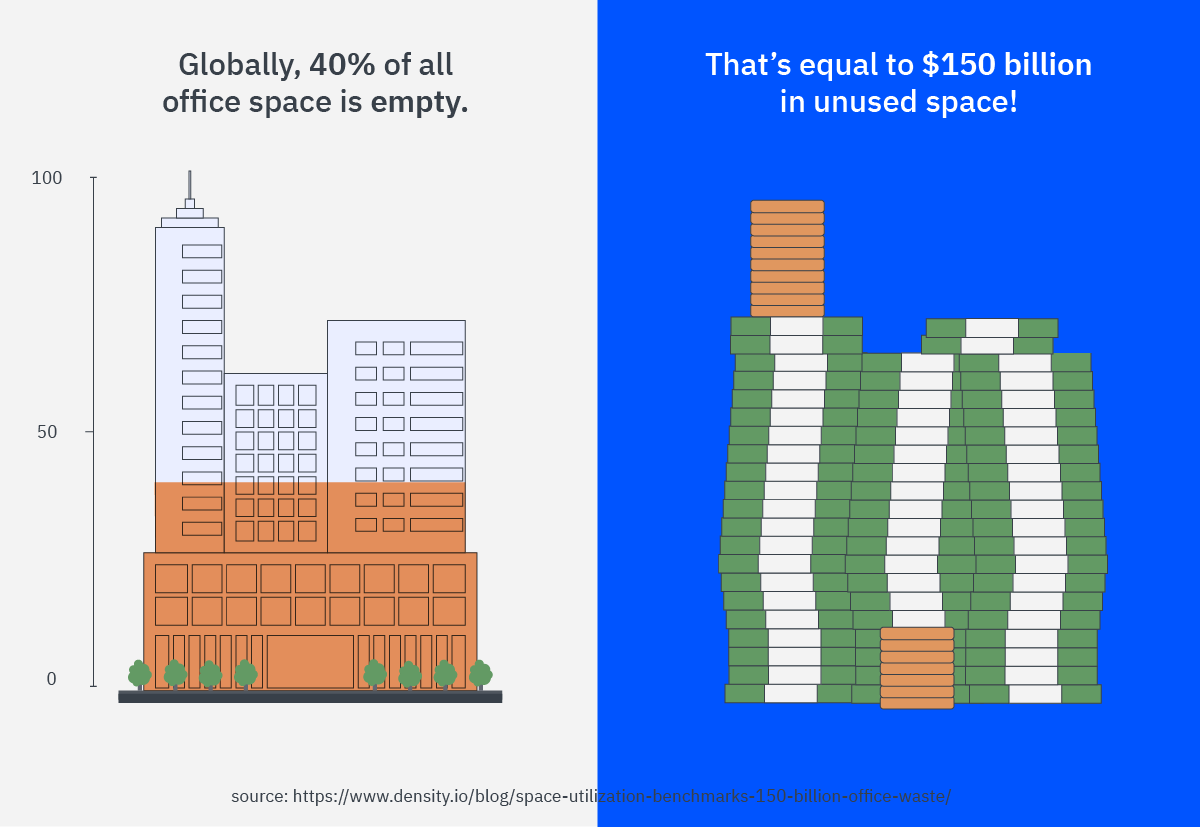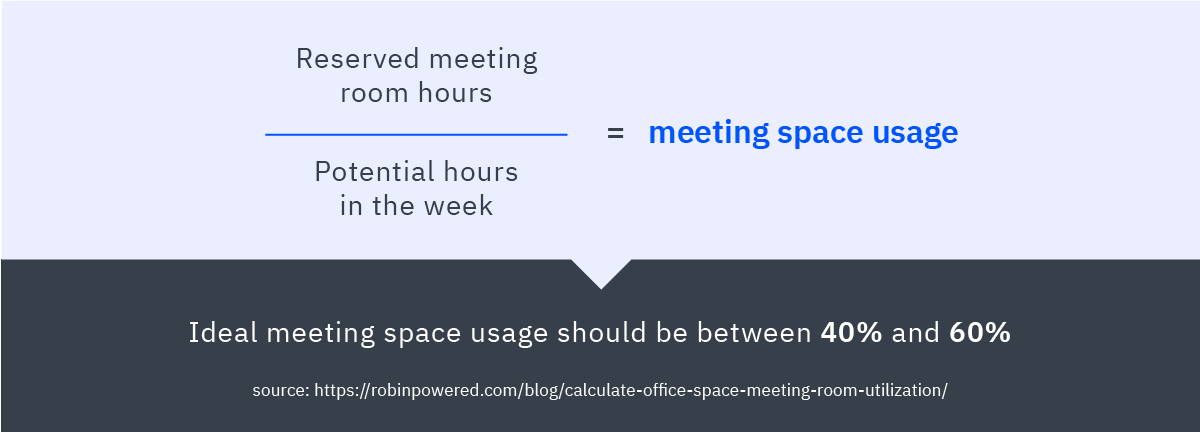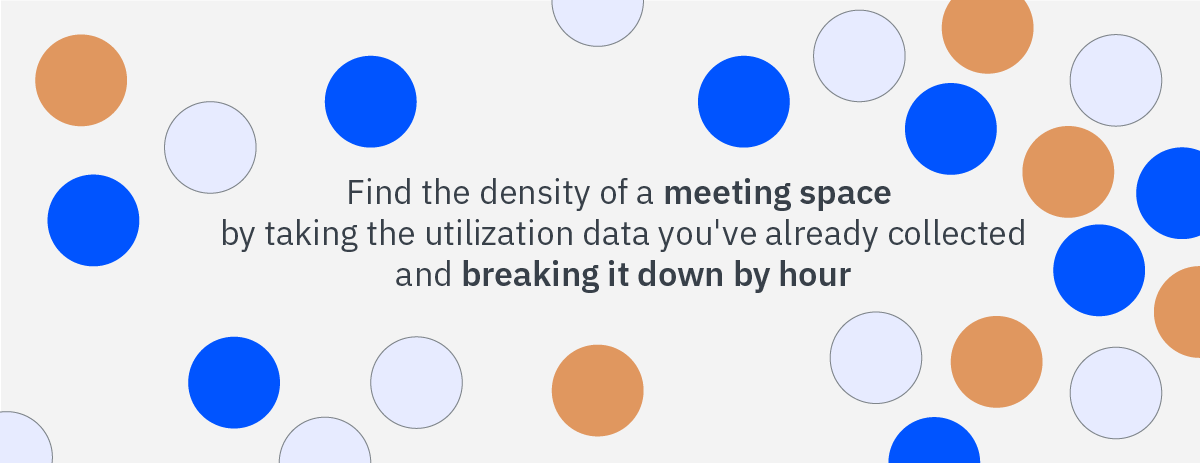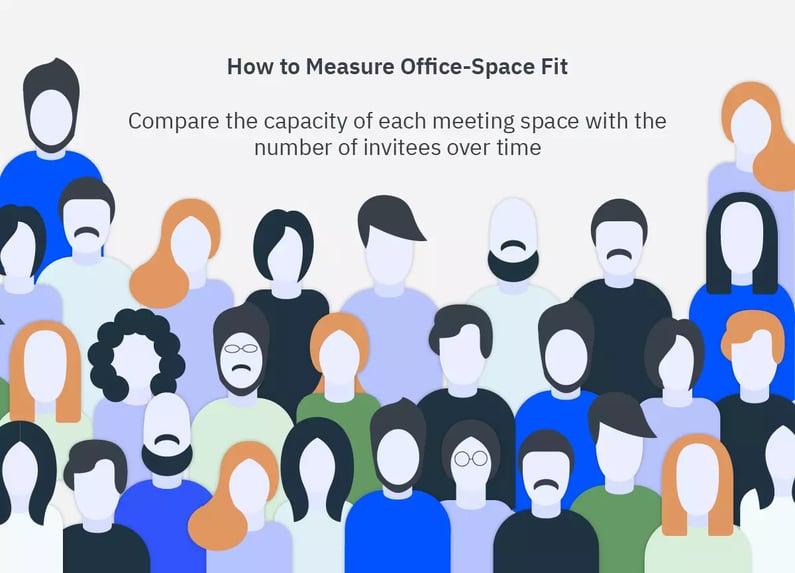Operations managers know—one of the biggest expenses associated with keeping a business running is the cost of office space.
And with the increasing mobility and flexibility of the workforce as well as rising rent prices, it’s getting harder yet more important than ever to understand and drive down the cost of utilization.
So without further ado, let’s delve right into the true cost of poor office space utilization as well as the key metrics to track to boost utilization and improve the ROI of office space.
The true cost of poor workplace utilization
Currently, only 13 percent of organizations around the world actually use their office space for more than 80 percent of the time their business is open. This is poor space utilization.
So, it’s really no surprise that 40 percent of workspaces globally were empty on any given workday during 2018. However, what may be surprising is that poor utilization costs businesses upwards of $150 billion a year. Here you can see an image of the actual cost of your workplace utilization.

These poor utilization metrics and expenses don’t just include offices—they also extend to meeting spaces, where the average utilization is a meager 30 percent.
And even when these meeting spaces are being used for their intended purpose, still only 40 percent of the seats are ever filled. This is because while many meeting rooms are built for six people, most meetings consist of three or fewer workers.
To save on the expenses associated with wasted meetings, poor workplace utilization, and office space, office operations staff must strike the perfect balance between maximizing utilization and downsizing to the point of damaging performance and morale.
Want to know how? Coming right up!
4 Key Metrics to Track for Boosting Your Workplace Space Utilization
These four key metrics will empower any office manager to better understand their unique meeting room usage patterns and craft the perfect strategy for improving utilization and ROI.
1. Usage: Is your meeting space utilization ideal?
If you’re shooting for 100 percent meeting space utilization, you’re doing it wrong.
According to one workplace experience software company, most offices operate the best when meeting spaces are being utilized for 40 to 60 percent of the workweek. Lower utilization could indicate that you’re wasting money on excess, unused space. Higher may mean workers are finding it difficult to book meeting spaces when they need them.
To find out where your business stands, measure your weekly meeting space utilization by dividing the number of hours your meeting spaces are reserved by how many hours they’re available over the course of a week.

Meeting space utilization is a key metric to measure because it can help office managers anticipate necessary changes in office size; determine how a modern, flexible working environment is impacting the company’s real estate investment; and even indirectly keep track of employee satisfaction.
2. Density: Do you have booking bottlenecks that need unblocked?
In the context of meeting space, density is the measure of how many people are using a specific space at any given time.
Density can be found by watching what percentage of meeting spaces are reserved every hour of the workday—and how this changes over the course of a week.

Monitoring this metric helps office administrators identify if—and then where—bottlenecks are taking place so that scheduling guidelines (no recurring meetings, limiting meetings to certain days, etc.) can be put in place to level out space utilization instead of pouring money into new, unnecessary space.
3. Popularity: What types of meeting spaces does your employees prefer?
Ranking meeting spaces by popularity is a great way to identify which are employee favorites and which are avoided and, likely, underutilized.
The popularity of any given meeting space can be easily determined by tracking how many meetings take place in each space during a certain time frame.
![]()
Why should you care about which meeting rooms are popular among workers? Because this information provides valuable insight into what your employees prefer—from the type of space to the size to the equipment and other resources it contains.
You can use this type of workplace analytics to help office managers invest meeting space spending more efficiently and grow utilization office-wide.
4. Fit: Can employees access a suitable mix of meeting areas?
Office-space fit boils down to whether or not a meeting space matches (or “fits”) the needs of the meeting attendees.
A poor fit may look like two people being forced to book a full-size conference room for an hour when they really just need to brainstorm for 10 minutes. On the flip side, a great fit would be a casual, small, and quiet space that the same workers are free to jump in and out of with ease.
Meeting fit can be found by comparing the capacity of a meeting space with the number of meeting invitees. What you’re looking to determine is whether people are booking rooms that fit the number of attendees or not—and how often a mismatch is happening.

With workplace utilization data you can track meeting fit, businesses can get a better idea of whether or not they have the appropriate meeting spaces—or types of meeting spaces—that employees need.
If you find that the meeting spaces you already have aren’t quite aligning with employee desires, there are a few inexpensive ways to freshen them up.
Try room dividers and light, comfortable furniture that can be rearranged to break large conference rooms into multiple intimate, useful meeting areas. Additionally, you could have big meeting spaces pull double-duty as game rooms or exercise areas when they’re not being utilized for actual meetings.
No matter how you configure your office space to boost utilization, make sure to always start with installing modern, user-friendly meeting technology.
How to measure and monitor these key meeting space utilization metrics
Measuring, understanding, and optimizing meeting space utilization metrics isn’t just great for saving dough—it’s also great for boosting employee morale and productivity.
Workplace utilization can help you save a ton of money by not having to hire a herd of data nerds to manually slice and dice your meeting metrics.
It would be a whole lot easier—and affordable—to invest in software that takes you all the way from meeting room (and resource) management to analytics and insights.
Looking for a little more reassurance on exactly how useful data about your meeting rooms and organizational productivity could be? We got you.
Learn exactly how to improve meeting space utilization at your workplace, how to identify trends and patterns in meeting room usage, and exactly what to do to improve meeting rooms for your workers with AskCody's free Meeting Insights and Analytics E-Book.



